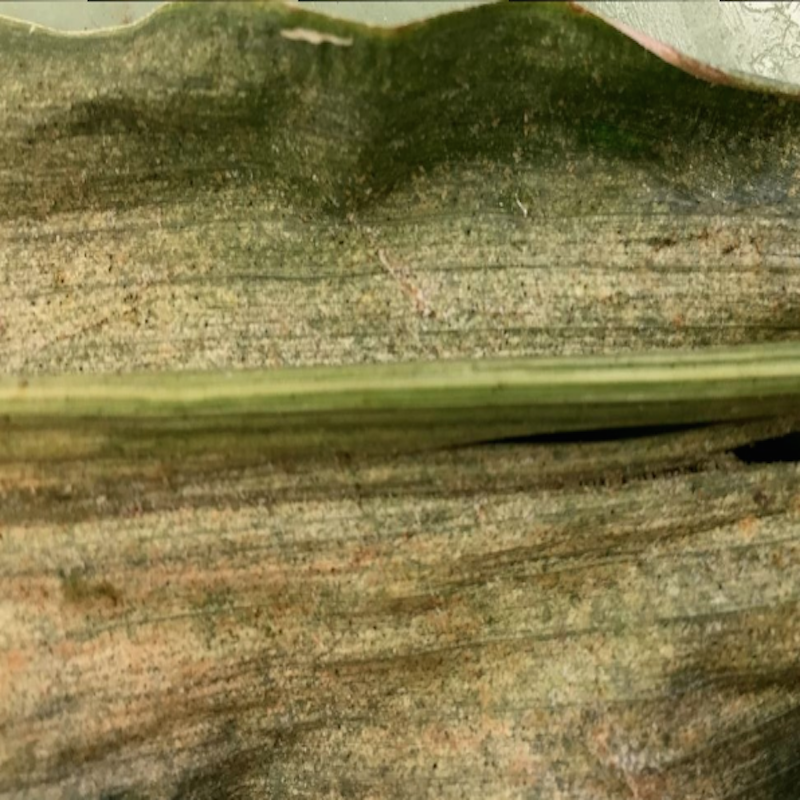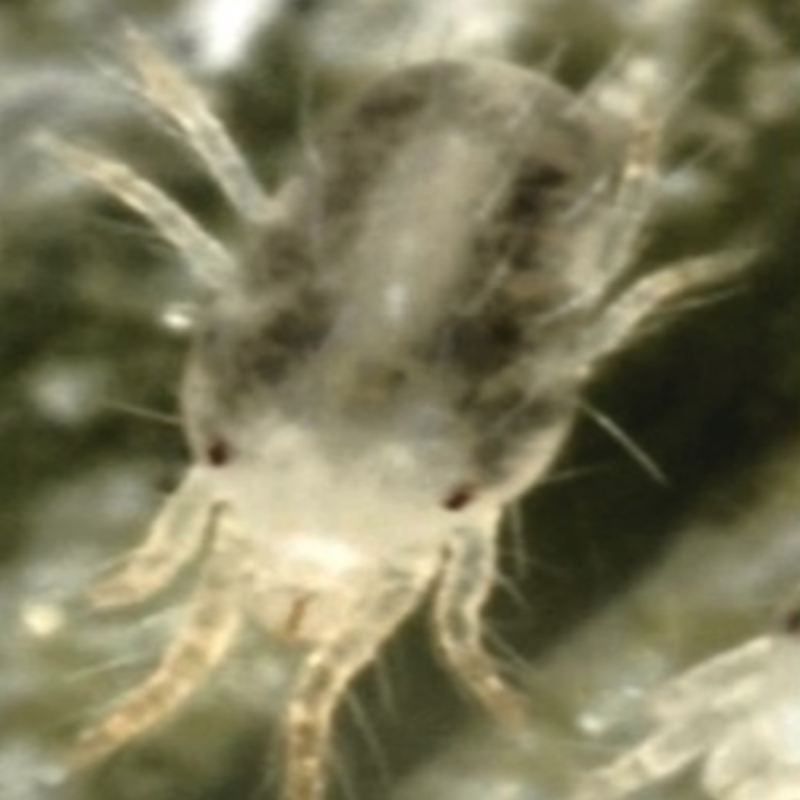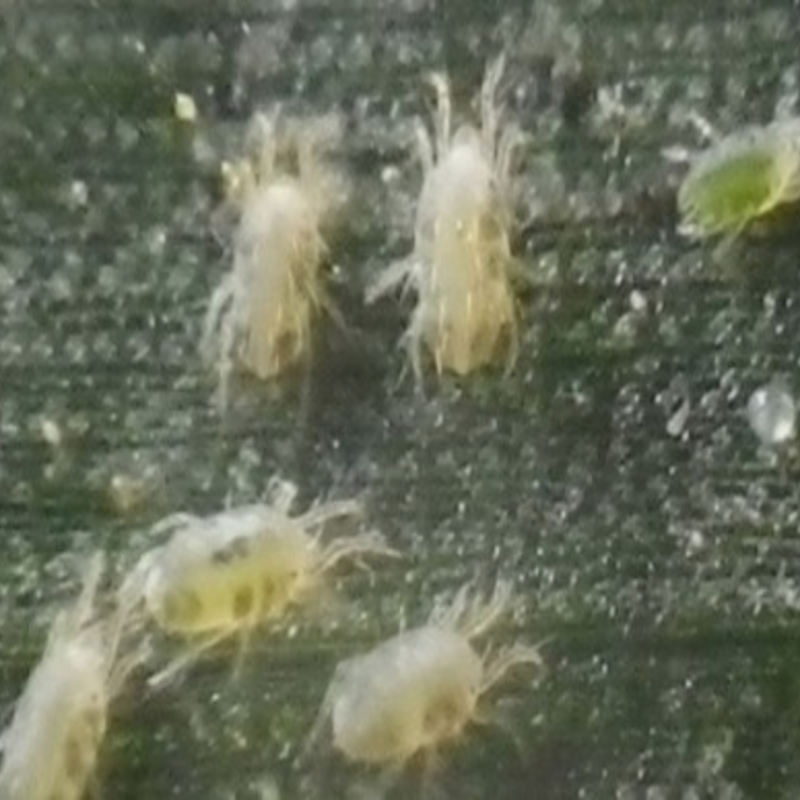
Banks grass mite: The feeding damage results in yellowing, then dry, necrotic areas. Mite webbing can be found where they are/have been present.


Historically, the Banks grass mite has been a serious pest of corn and sorghum, but it will migrate to fall-sown wheat when summer host plants, including many grass species, begin to dry down. Overwintering forms are bright orange and feed on plant crowns until spring when small, pearly white eggs are laid (visible in foreground of the above picture). These eggs give rise to sexual adults that are pale to bright green. Multiple generations occur throughout the summer.
Populations are favored by hot, dry weather, conditions that also increase the wheat plants’ susceptibility to feeding damage. Wheat may be damaged in fall or spring. Symptoms are yellowing and browning leaves covered with copious amounts of webbing. Selective treatment of field margins in the fall as mites move from summer hosts can provide adequate preventative control.
